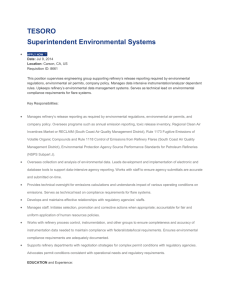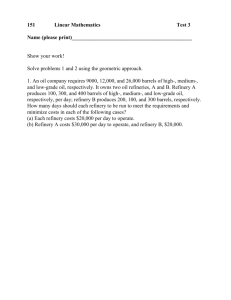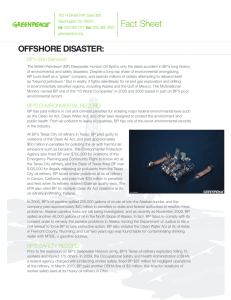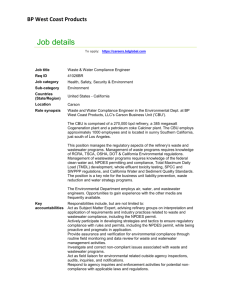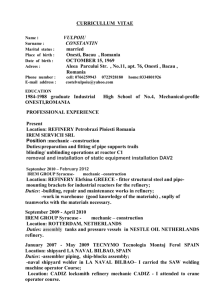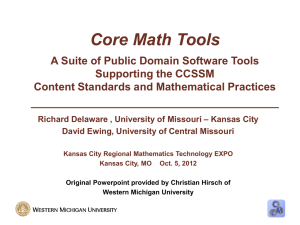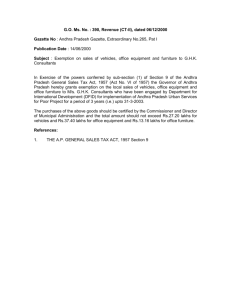Seminar Paper - Australian National University
advertisement
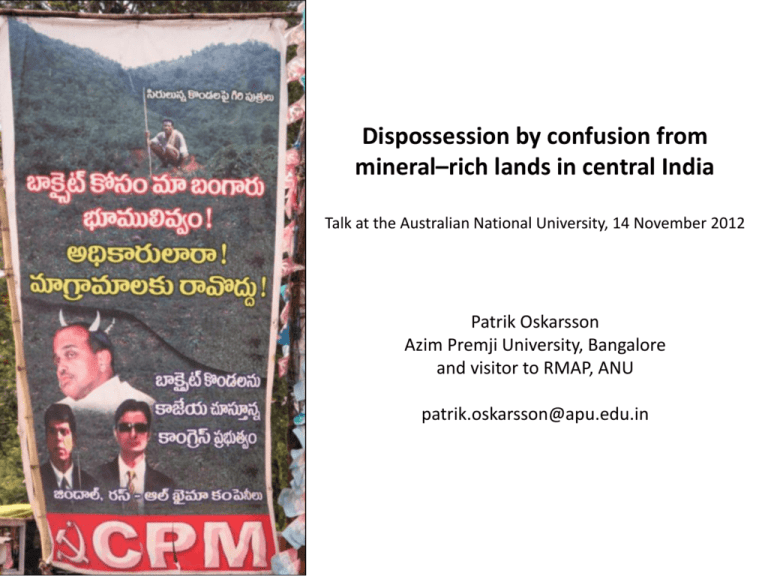
Dispossession by confusion from mineral–rich lands in central India Talk at the Australian National University, 14 November 2012 Patrik Oskarsson Azim Premji University, Bangalore and visitor to RMAP, ANU patrik.oskarsson@apu.edu.in The Project • Agreement between Andhra Pradesh State government & Jindal South West (JSW) (part of the Indian big business Jindal Group) in 2005 to develop bauxite industry: – Bauxite mining via State government company – Alumina refining by private investor – In different locations due to state land transfer rights which ban private ownership or lease of land in areas reserved for India’s Scheduled Tribes – Project still under implementation with land acquired for the refinery but little progress for the mining part The Issue • Close government – big business collaboration should seemingly have resulted in swift implementation (‘developmental alliance’ of Kohli (2007)) – Competent, ‘investment-friendly’ state government with relatively efficient bureaucracy – Private investor with strong finances and good political connections • Seemingly weak opposition: – Largely excluding ‘the people’, tribal groups affected at both mine and refinery sites – Urban NGOs, left parties but also many other individuals and an active media presence worked largely single-handedly on separate issues – Demanded complete stop to bauxite mining with no real alternative program for poverty alleviation and economic development • How to explain a virtual stalemate? Dispossession by Confusion - Dispossession by confusion is seen as the outcome of a number of informational problems: • To confuse: Hide information, create uncertainty over legal rights, complexity of overlapping jurisdictions at state/federal level, use of technical-bureaucratic language, political interventions in high-level forums hidden away from the public view • To make mistakes: Poor capacity of governments and sheer complexity mean mistakes will be made which open up for challenges from the project opposition Theoretical approach - Political ecology forms a basis in struggle over natural resources - Emphasis on many actors, multiple issues and the ability to voice claims across a multitude of geographically dispersed discursive forums. Drawing on the critical theory of Habermas and Fraser - Avoidance of communication can be a mechanism of rule in a democratic setting with some independent institutions and accountability functions (Bohman 2000) - Silence can not be the only tactic when at least some transparency exists as well as some independent institutions -> How issues are framed and how implementation is mediated becomes important (Fraser 1989, 2007) Land for industry or agriculture? - Multiple, complex issues are involved when largescale industry is proposed on land traditionally inhabited by adivasi peoples - Here the focus is on land acquisition as planned by the promoters and deliberated upon in local democratic forums - Of the four cases related to land, land acquisition for the refinery is discussed Land for the Refinery Framing land as government-owned and non-productive: - The EIA described the proposed refinery land use as “waste land with agricultural activities in patches” - “[t]he land identified for locating the Alumina refinery of 1350 acres consist of about 85 per cent government land and 15 per cent private land” (Vimta Labs 2007, pp. C2–3). - Internal government document says - it is assigned land meaning it is farmed by marginal farmers and - goes on to list hundreds of adivasi (290 households) and Dalit (33 households) out of total 438 households losing land in area mainly inhabited by other groups of people Oskarsson, P. Forthcoming 2013. Giving with one hand, taking away with the other: Land for industry via a land distribution program in Andhra Pradesh. In S. Somayaji & S. Dasgupta, eds. Sociology of Displacement, Delhi: Rawat Publications Official refinery land acquisition map Refinery land acquisition map on Google Earth Refinery land outcomes - A site which hid marginalised groups and their agricultural activities from the actual impact - But a lot of time was spent planning for and later rectifying mistakes in the land acquisition process making challenges possible Local democracy and land acquisition - Panchayat Raj/PESA (village councils) should have allowed for deliberations on land for the refinery and mine respectively but: - Local politics ensured a swift decision influenced by Congress strong-arm tactics at the refinery - PESA was kept in a limbo by adopting the law without its related Rules at the mine Oskarsson, P., 2013. ‘Dispossession by confusion from mineral–rich lands in central India.’ South Asia: Journal of South Asian Studies 35. Multiplied Confusion • Similar issues to land were found in a number of other areas for both mine and refinery: – Land rights (state land transfer regulation, Samatha Supreme Court Judgement) – Water (local reservoirs, rivers of coastal Andhra Pradesh) – Forest (forest protection, forest rights) – Local democracy (PESA/Panchayat Raj) – Environmental Pollution (EIAs, public hearings, courts) – Environmental conservation (rare species in the mining area) – Economics (state income, local benefit-sharing) Oskarsson, P. 2010. The law of the land contested: Bauxite mining in tribal, central India in an age of economic reform. Norwich, UK: University of East Anglia. Also as a future book. Vedanta in Orissa Conclusion - Dispossession by confusion is the official approach to favouring business interests in a democratic setup - The confusion entangles many in the government however and results in mistakes as part of this process - A paralysing standoff over bauxite mining and adivasi land in Andhra Pradesh (similar to other stand-offs in central India) due to multiple, unresolved issues - Neither industrialisation nor human development are well-served by this state of affairs - The particularly strong opposition in Andhra Pradesh has managed to halt industry so far. Elsewhere in central India projects are slowly pushed through to the detriment of local populations

